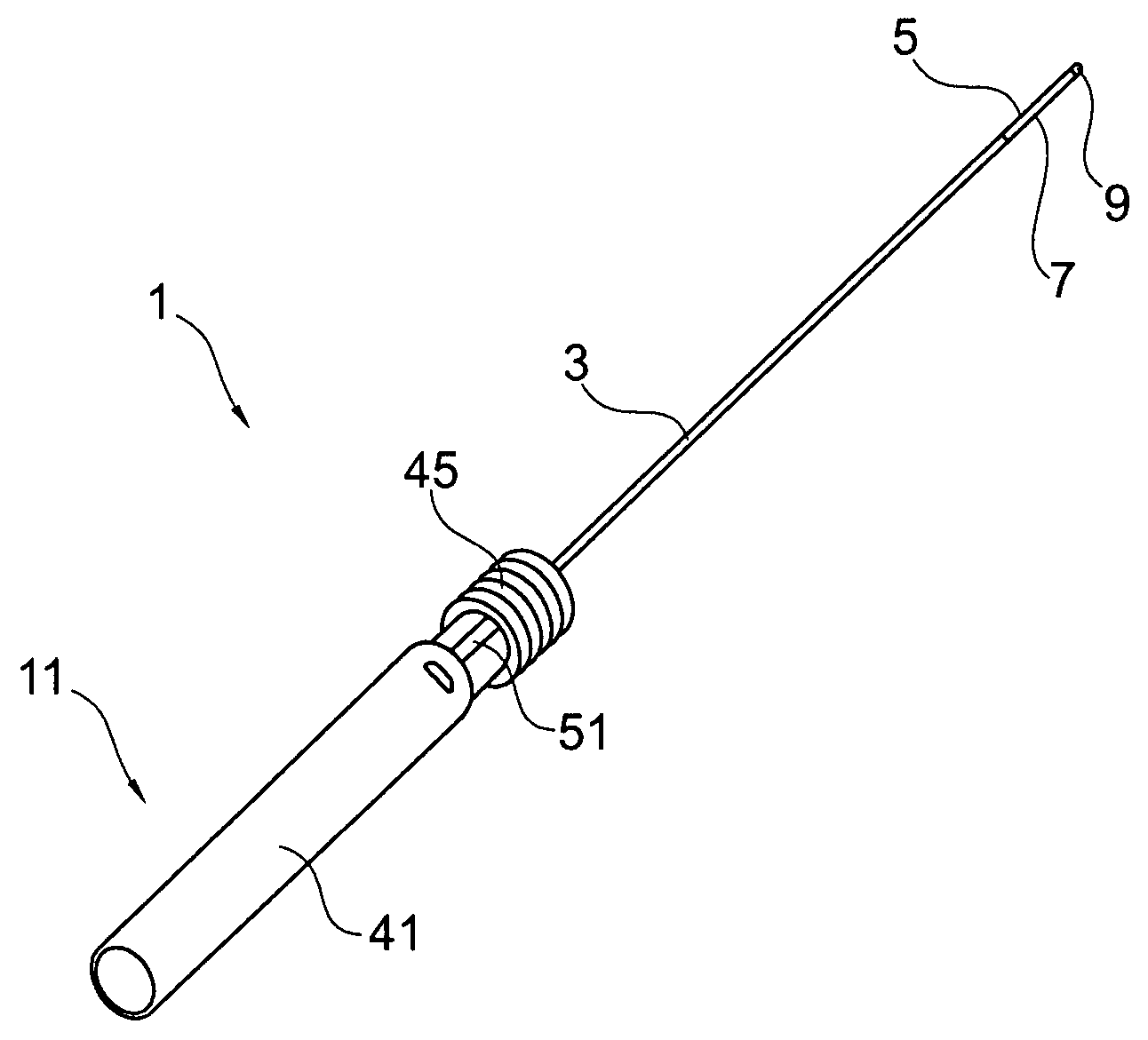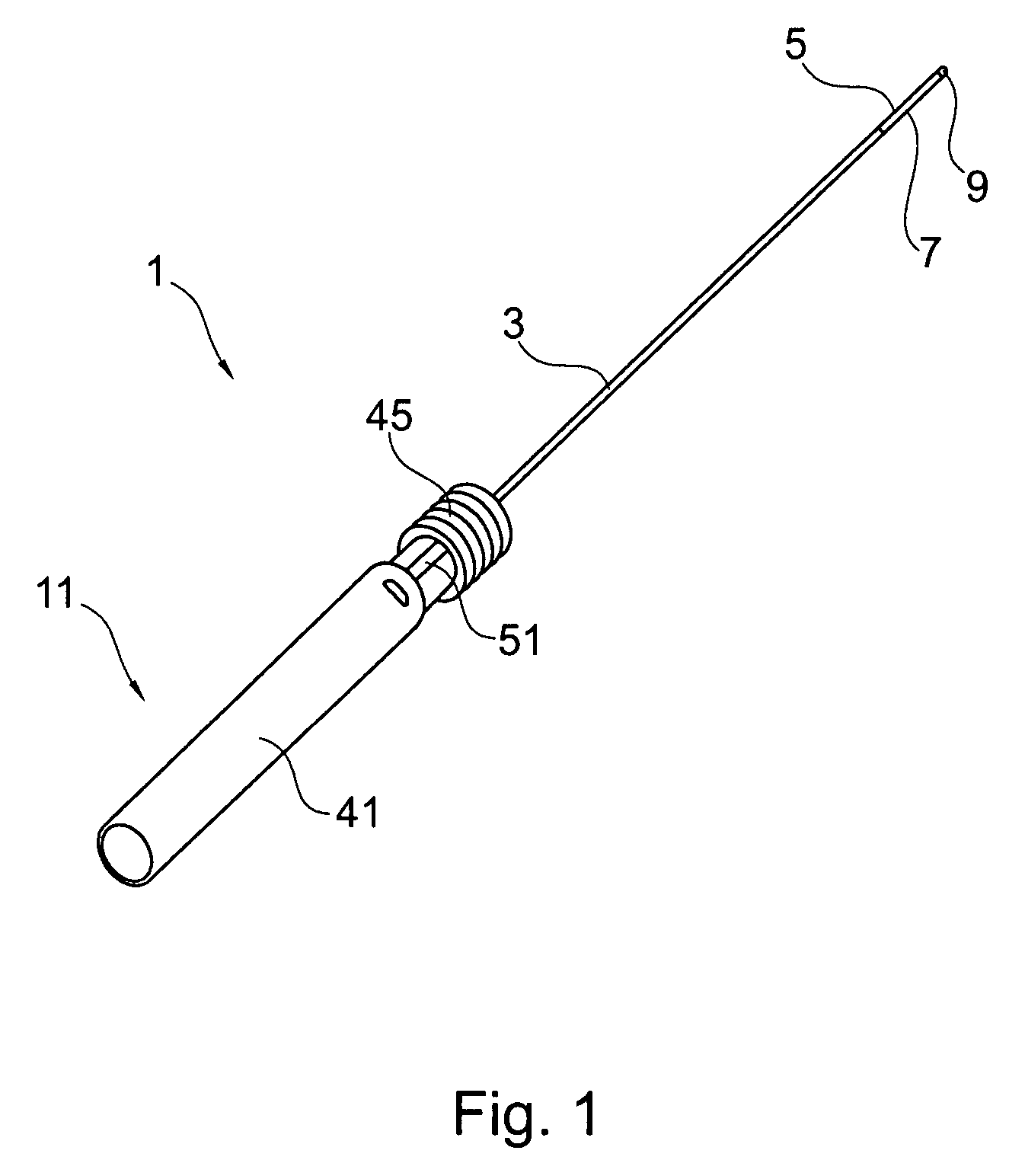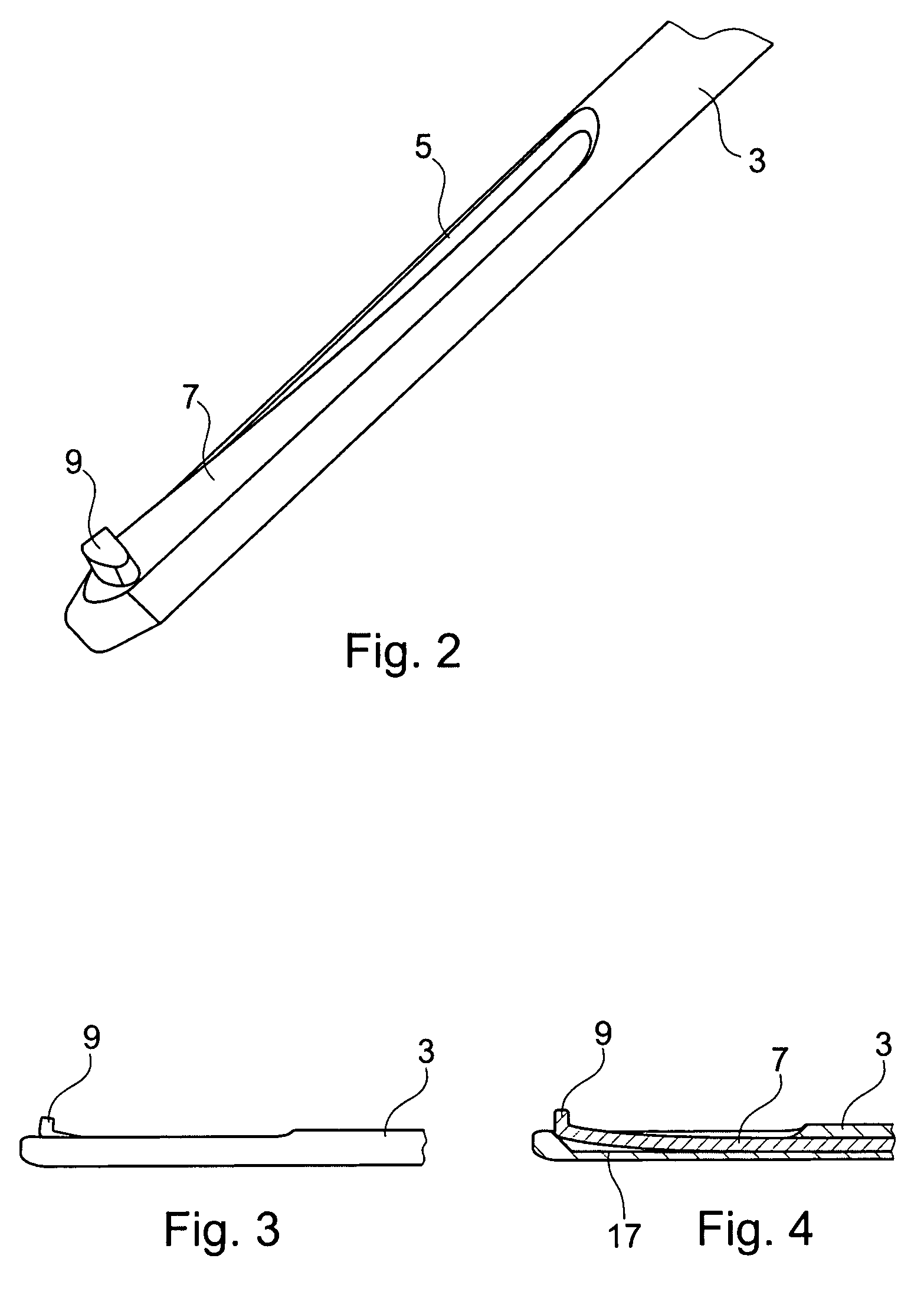Bone hole measuring device
a measuring device and bone hole technology, applied in the direction of osteosynthesis devices, prostheses, catheters, etc., can solve the problems of injuring soft tissue, difficulty in and clamping some soft tissue, and achieve the effect of increasing the local cross-section or diameter of the measuring device and reducing the difficulty of fixing the hook at the distal cortex
- Summary
- Abstract
- Description
- Claims
- Application Information
AI Technical Summary
Benefits of technology
Problems solved by technology
Method used
Image
Examples
Embodiment Construction
[0039]FIG. 1 schematically shows a preferred measuring device 1 for measuring the length of a through-hole in a bone for example a long bone such as a tibia or femur, including an elongated hollow sleeve 3 with an opening 5 at its distal extremity and a bar or rod 7 having a hook-end 9 at its distal extremity. The measuring device 1 further comprises a handle 11 including a rotatable grip 41, a static part 45 and a scale 51, wherein the rotatable grip 41 is adapted for displacing the bar or rod 7 longitudinally along sleeve 3.
[0040]As can be seen from FIGS. 2, 3 and 4, the distal extremity of preferred sleeve 3 comprises an opening 5 in the form of an elongated slot in the lateral surface of sleeve 3. In the preferred embodiment the opening 5 has a width corresponding to the width of rod 7 housed within sleeve 3 such that rod 7 can deflect out of sleeve 3 through opening 5 at the distal part of sleeve 3.
[0041]In a distal position where rod 7 is pushed towards the distal extremity of...
PUM
 Login to View More
Login to View More Abstract
Description
Claims
Application Information
 Login to View More
Login to View More - R&D
- Intellectual Property
- Life Sciences
- Materials
- Tech Scout
- Unparalleled Data Quality
- Higher Quality Content
- 60% Fewer Hallucinations
Browse by: Latest US Patents, China's latest patents, Technical Efficacy Thesaurus, Application Domain, Technology Topic, Popular Technical Reports.
© 2025 PatSnap. All rights reserved.Legal|Privacy policy|Modern Slavery Act Transparency Statement|Sitemap|About US| Contact US: help@patsnap.com



